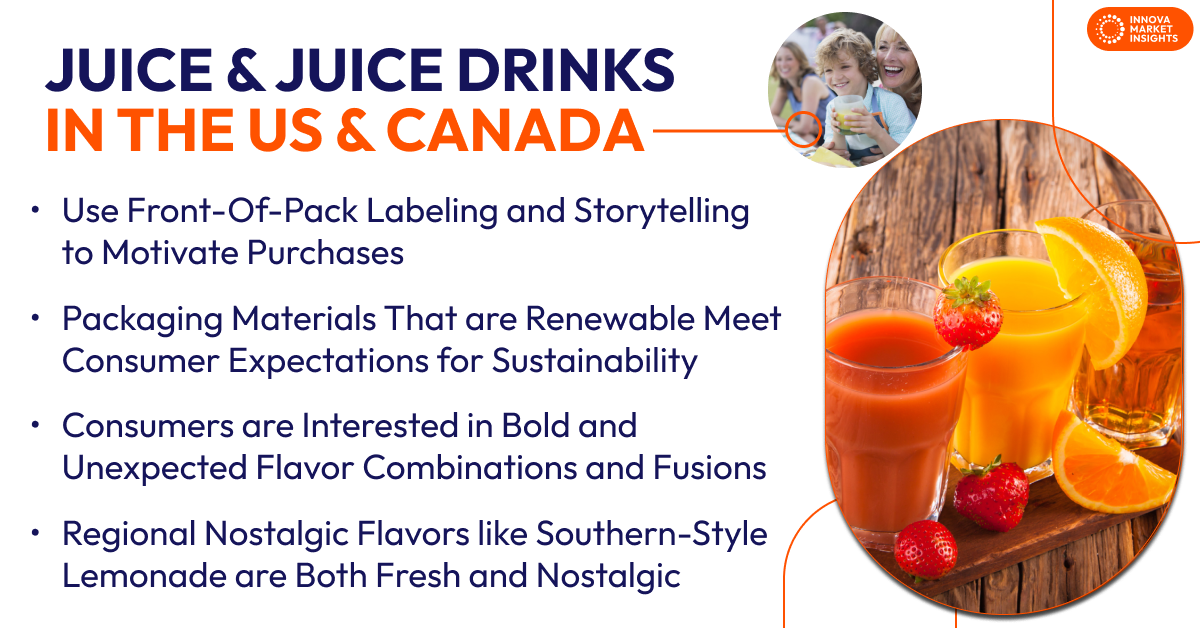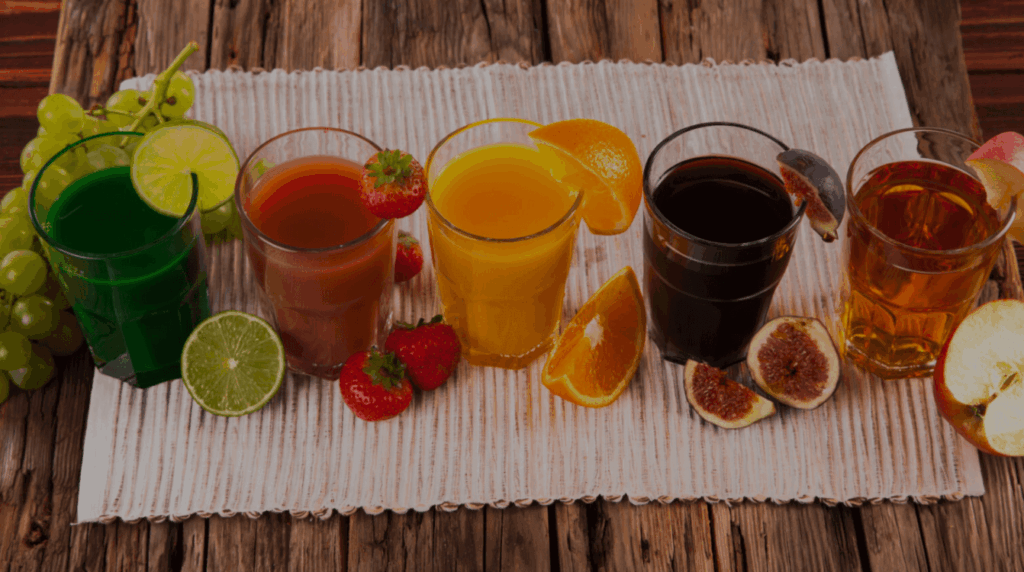August 6, 2025 – Juice and juice drinks in the US and Canada can be differentiated in many ways. One is to identify the drink by juice variety and processing method. Terms such as cold-pressed and small batch convey freshness and quality. They also communicate with transparency.
Juices Can Deliver Multiple Benefits
A traditional platform for juice is taste. Today’s consumer is value-conscious market and looking for extra features beyond taste. Brands can elevate their juice products in the US and Canada by focusing on premium qualities, as well as functional nutrition that is targeted to consumer needs. Since US and Canadian participants in consumer trends research say they are extremely concerned about digestive health, and many are attracted to products for their digestive health benefits, juice that are enhanced with prebiotics and probiotics could capture share. Other attractive features for functionality and wellness are nutrition by life-stage, added vitamins, and less sugar. Vitamin claims and sugar-related claims support changing health priorities across the lifecycle. Juice trends reveal that sugar-free is the fastest growing claim in juices.
Consumers in the US and Canada also expect products to be clean. Brands may be able to capture share with everyday juice products that are clean and fit into daily routines. Consumer perception of clean products includes clean labels and the absence of artificial flavors, colors, and sweeteners. Communication of clean features also is essential since US and Canadian juice consumers report being influenced by juice and juice drink claims with no artificial flavors or artificial colors.
Juices can be positioned to energize in the morning and provide tasty hydration later in the day. Over one-third of US and Canadian participants in a consumer trends research say that they purchased food and beverages for hydration or rehydration in recent months.

Tailor Juice Packaging to Meet Consumer Expectations
Juice packaging can connect with consumers, provide them with information, and inspire them toward purchase. Packaging can gain consumer trust and purchase by encouraging consumption occasions, demonstrating sustainability through choice of packaging materials, and listing ingredient and health benefits front-of-pack.
Highlight sustainability with smart choices in packaging. A solid percentage of US and Canadian consumers report in consumer trends research that they would like to see brands and companies help the environment by using sustainable packaging. Packaging materials that are renewable meet consumer expectations for sustainability, build trust, and strengthen juice product preferences.
Front-of-pack information can highlight important features of juice, juice drinks, and smoothies. Juice trends show that consumers in the US and Canada consider label information and claims important when purchasing juices. Front-of-pack information can help juice consumers make quick decisions based on key ingredients and health benefits.
Differentiate Juices by Key Features
Juice flavors can support feelings of wellness and comfort. US and Canadian consumers equate berry and fruit flavors with being uplifted, cheerful, refreshed, and healthy. Botanicals, spice fusions, and tropical blends demonstrate innovation that can surprise and energize consumers. Consumer trends research from the US and Canada show that consumers are interested in bold and unexpected flavor combinations and fusions. They also view botanicals as good for their health.
Juice content is another differentiating feature that supports quality and naturalness. Products can range from juice drinks with up to 23% juice to nectars with 24-99% juice to 100% reconstituted juice and 100% juice not from concentrate.
Juice consumers in the US and Canada may be enticed by freshly-crafted features since one-third of these consumers are influenced to purchase by freshness. These can be reinforced with language such as “cold-pressed” or “small batch” that also conveys premium quality.
Communicate information about ingredient integrity for premium appearance. Use storytelling about sourcing and processing to communicate elevated quality and value.
Broaden Time-of-Day Consumption
Consumer trends research conducted by Innova show that the beginning of the day is the most popular time to drink juice. It’s true that juice can be part of a balanced meal in the morning. Other dayparts are important too, as many consumers in the US and Canada report drinking more juices, juice drinks, and smoothies over a recent 12-month period.
What’s Next for Juices, Juice Drinks, and Smoothies?
Several ideas could help invigorate the market place for juices, juice drinks, and smoothies in the US and Canada. Asian citrus flavors inspired by street food, for example, sugar can and kumquat, could spark curiosity and attract the health-conscious consumer. Regional nostalgic flavors like Southern-style lemonade are both fresh and nostalgic. Southern-style lemonade can have the feel of small batch production, combined with heritage and authenticity. Functional wellness shots with cold-pressed juice plus functional ingredients appeal to consumers for convenience, energy, and immune health. Tropical juice blends with mango and passion fruit, for example, evoke the summer season and create novelty for the season. Juice consumers may be attracted by limited-time offers that are seasonal. Highlight ingredient origins as a way to build trust. Juices that describe their production process and ingredients demonstrate transparency and can build credibility.
This article is based on Innova’s Overview in Juice & Juice Drinks in the US & Canada report. This report is available to purchase or with an Innova Reports subscription. Reach out to find out more
